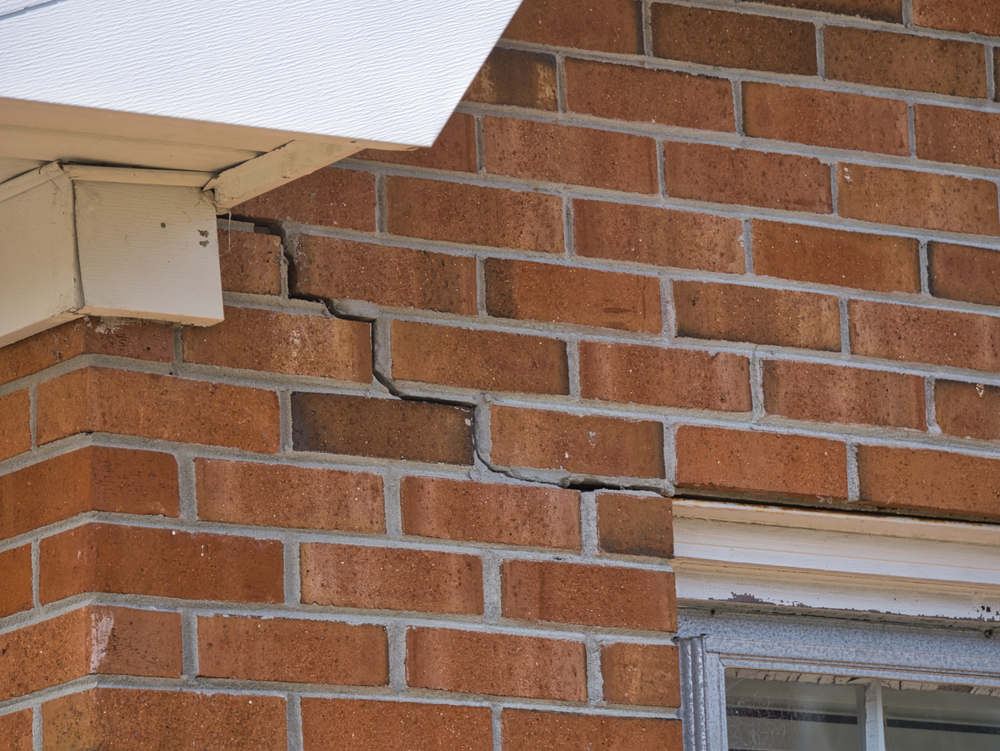Types of Underpinning: What Works Best for Your Foundation?
If you own property in an area with challenging soil conditions—such as high water tables, flood zones, or regions with sandy or unstable soils—choosing the right underpinning method is critical to your property’s long-term stability. Methods like helical piers and grout injection are highly effective for stabilizing foundations in such environments, as they resist soil movement, water saturation, and erosion.
In this guide, we’ll explore various underpinning methods, their benefits, and ideal applications for properties nationwide. With over 20 years of experience, Piers and Piles is a trusted foundation support contractor serving Long Island, Brooklyn, and Queens, NY. All our services are backed by a 30-year warranty, ensuring reliable solutions and lasting peace of mind wherever your property is located.
Protect Your Investment With Industry-Leading Foundation Stability Techniques!
What is Foundation Underpinning?
Underpinning is the process of strengthening and stabilizing existing foundations, particularly when they’ve become compromised or need to bear additional loads. Whether due to soil erosion, structural shifts, or a new addition to your home, underpinning restores stability and prevents future issues. Selecting the right method is key, as each project has unique challenges based on soil conditions, load requirements, and accessibility.
Signs You Might Need Underpinning
If your foundation is shifting, there are several warning signs to watch for. These issues may indicate the need for underpinning and should be addressed promptly to prevent further damage and maintain your property’s stability:
- Cracks in Walls
- Uneven Floors
- Sticking Doors and Windows
- Gaps Between Walls and Floors
- Sinking or Settling Areas Around the Foundation
- Visible Structural Damage

Types of Foundation Underpinning Methods: Applications and Benefits
At Piers and Piles, we’ve spent over 20 years stabilizing foundations across Long Island, Brooklyn, and Queens. Whether your property faces moisture issues in coastal zones or settlement in flood-prone areas, we deliver tailored solutions that work. For properties dealing with challenging soil conditions, such as expansive clay, high water tables, or shifting sands, we recommend underpinning with helical piers or micropiles. These methods ensure that your property remains stable and prevents long-term damage and structural failure by proving deep support that won’t shift around anymore.
Below, we outline the main types of underpinning techniques and their best uses:
Helical Pier Underpinning: Modern and Efficient Foundation Support
Helical pier underpinning is an advanced method designed to provide immediate stabilization for structures in challenging soil conditions. This technique uses steel piers with helical plates that are screwed deep into stable soil or bedrock, transferring the structure’s load to more reliable strata. Helical pier underpinning is highly versatile and ideal for projects requiring minimal site disruption and efficient installation.
Applications of Helical Pier Underpinning
- New Construction Support
- Residential and Commercial Foundation Repair
- Coastal and High Water Table Areas
- Industrial Applications
Benefits of Helical Pier Underpinning
- Immediate Load-Bearing Capacity
- Minimal Site Disruption
- Adaptability
- Long-Term Durability
Mass Concrete Underpinning: Traditional and Reliable
Mass concrete underpinning is the oldest and most widely used method for stabilizing foundations, particularly in residential settings where deepening and reinforcing are required. This traditional approach involves excavating sections beneath the foundation and filling them with concrete to provide additional support. By progressively digging and pouring concrete, the foundation is deepened, creating a solid base that can withstand increased loads and shifting soil conditions.
Applications of Mass Concrete Underpinning
- House Underpinning
- Porch and Deck Underpinning
- Basement Stabilization
Benefits of Mass Concrete Underpinning
- Proven Reliability
- Cost-Effective for Residential Projects
- Minimal Disruption
Beam and Base Underpinning: Enhanced Load Distribution
Beam and base underpinning is a modern technique designed to enhance load distribution for buildings, providing reliable support for both new and existing foundations. In this method, reinforced concrete beams are installed below the existing foundation and connected to concrete bases or piles. The load of the structure is transferred to the beams and then distributed evenly to the concrete bases, creating a stable foundation that can handle uneven loads.
Applications of Beam and Base Underpinning
- House Extensions
- Heavy Structures
- Commercial Properties
Benefits of Beam and Base Underpinning
- Enhanced Load Distribution
- Versatile Application
- Customizable Design
Pile and Beam Underpinning: Versatility for Varying Conditions
Pile and beam underpinning offers a versatile solution for projects with varying ground conditions, ensuring stable foundations for everything from homes to outdoor structures. This method involves driving piles into stable ground and connecting them with a concrete beam that runs under the existing foundation. The load of the structure is transferred from the original foundation to the concrete beam and piles, providing enhanced stability and resistance to settlement.
Applications of Pile and Beam Underpinning
- Underpinning for Decks
- Underpinning Concrete Foundations
- Variable Soil Conditions
Benefits of Pile and Beam Underpinning
- Versatile Application
- Improved Load Distribution
- Adaptability
Mini-Piled Underpinning: Ideal for Confined Spaces
Mini-piled underpinning is the go-to solution for projects with limited access, offering stability in situations where traditional methods aren’t feasible. This technique involves driving small-diameter piles deep into the ground to reach stable soil or bedrock. The piles transfer the load of the structure to more reliable strata, making this method particularly effective in areas with variable or weak soils.
Applications of Mini-Piled Underpinning
- Basement Underpinning
- Urban Infill Projects
- Retrofitting Existing Foundations
Benefits of Mini-Piled Underpinning
- Space-Efficient
- Adaptable to Various Soil Conditions
- Quick Installation
Expanding Resin Injection Underpinning: Non-Disruptive Foundation Stabilization
Resin injection underpinning is a non-invasive technique that rapidly stabilizes foundations, ideal for projects requiring minimal site disruption and fast results. The process involves injecting expanding resin into the ground to fill voids and compact loose soils, creating a stable base for the foundation. This method is particularly useful for projects where quick stabilization is essential, such as underpinning concrete slabs, decks, and small structures.
Applications of Resin Injection Underpinning
- Underpinning House Foundations
- Underpinning Concrete Slabs
- Rapid Stabilization Projects
Benefits of Resin Injection Underpinning
- Minimal Disruption
- Fast Results
- Adaptable to Confined Spaces
| Underpinning Method | Best For | Advantages | Considerations |
| Helical Piers Underpinning | Coastal properties, flood zones, high water table areas | Immediate load capacity, minimal disruption | Higher upfront cost for materials and expertise |
| Mass Concrete Underpinning | Residential properties, smaller projects | Proven reliability, cost-effective | Requires more excavation, longer installation time |
| Beam and Base Underpinning | Large structures, uneven load distribution | Enhanced load distribution, customizable design | May require more specialized labor |
| Mini-Piled Underpinning | Confined spaces, urban areas | Space-efficient, adaptable to various soil types | Higher cost for specialized equipment |
| Pile and Beam Underpinning | Mixed soil conditions, variable loads | Versatile application, improved load distribution | Requires careful site planning |
| Resin Injection Underpinning | Quick stabilization, minimal disruption | Fast installation, non-invasive | May not be suitable for very heavy loads |
Comparing Different Foundation Underpinning Techniques: Which Is Right for Your Project?
Choosing the right foundation underpinning techniques for your project depends on several factors, including soil conditions, project requirements, and budget. Each technique offers unique benefits and is suitable for specific scenarios. Below, we compare the most common types of underpinning methods to help you determine which approach best fits your foundation repair needs.
When deciding which underpinning method is right for your project, consider factors such as the load requirements, site conditions, access limitations, and budget. Consulting with a professional underpinning contractor can provide valuable insights into which method will offer the best results for your specific needs.
What to Look for in an Underpinning Company
When choosing an underpinning company, consider their experience, expertise, and portfolio of successful projects. Ensure they have a thorough understanding of local soil conditions, a history of working on similar properties, and proper licensing and insurance. Look for companies that offer detailed site assessments, transparent pricing, and customized underpinning solutions tailored to your needs.
What to Look for in an Underpinning Company
- Experience and Expertise
- Proven Portfolio of Successful Projects
- Thorough Understanding of Local Soil Conditions
- History of Working on Similar Properties
- Proper Licensing and Insurance
- Detailed Site Assessments
- Transparent Pricing
- Customized Underpinning Solutions
Our Comprehensive Underpinning Services
At Piers and Piles, we’ve spent over 20 years stabilizing foundations across Long Island, Brooklyn, and Queens. Whether your property faces moisture issues in coastal zones or settlement in flood-prone areas, we deliver tailored solutions that work. For properties dealing with shifting or unstable soils, we often recommend helical piers or micropiles to provide deep, reliable support.
Choosing the right method depends on your property’s needs. Below, we outline the main types of underpinning techniques and their best uses to help you make an educated decision. If you have any questions, click any of the buttons on this page to speak with one of our friendly experts.
Micropiles and Hollow Bar Micropiles
Perfect for flood zones or coastal properties, underpinning with micropiles offers immediate load-bearing capacity and minimal disruption, stabilizing structures on unstable or saturated soils.
Helical Piers and Anchors
Perfect for flood zones or coastal properties, helical piers underpinning offer immediate load-bearing capacity and minimal disruption, stabilizing structures on unstable or saturated soils.
Mass Concrete Underpinning
A cost-effective and time-tested method for residential projects, providing deep, stable foundations for properties with shallow or weakened footings.
Beam and Base Underpinning
Designed for heavy structures or uneven loads, this method distributes weight effectively using reinforced beams and concrete bases for long-term stability.
Push and Slab Piers
Excellent for correcting settlement issues, push piers underpinning stabilizes sinking foundations and reinforces slab structures with deep, reliable support systems.
Resin Injection
Non-invasive and fast, methods like poly foam chemical grouting for underpinning stabilizes foundations by filling voids and compacting loose soils, ideal for projects requiring minimal site disturbance.

Why Choose Piers and Piles as
Your Underpinning Contractors?
With over 20 years of experience, Piers and Piles delivers precise, reliable micropile installations tailored to Long Island, Brooklyn, and Queens’ unique soil challenges. Our expert team ensures durable solutions for residential, commercial, and infrastructure projects, backed by industry-leading warranties and exceptional service.
Contact Us Today for Your Free Assessment!
Out crews have decades of expertise delivering reliable underpinning solutions.
We offer proven, tailored techniques for residential, commercial, and historical properties.
Known for our experience in foundation support, we offer durable, reliable methods using high-quality materials for stability.
We demand the best for our customers. Something we back with long-term protection to ensure peace of mind and reliability.
Types of Underpinning Methods: Final Thoughts
Understanding the different types of underpinning methods is key to selecting the right approach for your foundation needs, whether it’s for a house, basement, or deck. Each project is unique, requiring a tailored solution that considers the specific soil conditions, structure type, and budget. Choosing the correct underpinning method can ensure long-term stability and prevent costly repairs down the road.
At Piers and Piles, we specialize in offering customized foundation underpinning solutions, with over 20 years of experience serving Brooklyn, Queens, and Long Island. Our certified installers will assess your property and recommend the best approach to keep your foundation secure.
Need Expert Advice on Underpinning? Contact Us to Discuss the Best Solution for Your Project!